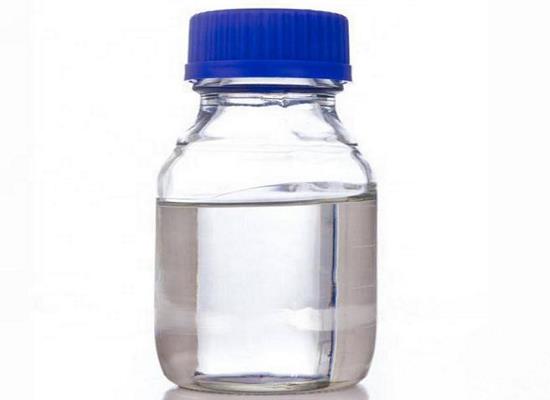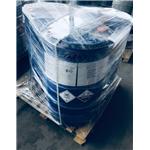Chloroacetyl chloride: applications in synthesis and toxicology
Jul 21,2023
General Description
Chloroacetyl chloride is a versatile compound widely used in organic synthesis. It can react with other compounds to form acylated derivatives, which undergo further chemical reactions. In pharmaceutical research, it has been employed to synthesize novel anti-tumor drugs, showing promising cytotoxic activity against various cell lines. Chloroacetyl chloride is also utilized in the preparation of surfactants, enhancing drug delivery and pharmacokinetics. However, it is essential to note that this compound poses significant toxicity risks, causing eye irritation and organ damage upon exposure. Strict safety precautions must be implemented when handling chloroacetyl chloride to safeguard human health and the environment.

Figure 1. Chloroacetyl chloride
Applications in synthesis
Organic synthesis
Chloroacetyl chloride can be used to form acyl chloride groups, which play an important role in synthesis. It can react with other compounds to form acylated products such as acyl chloride derivatives, amides, esters, etc., and participate in further chemical reactions such as nucleophilic substitution, condensation, etc. In the context of developing new σ2 receptor ligands, researchers have connected spirocyclic piperidines or cyclohexanamines with 2-benzopyran and 2-benzofuran scaffolds to the 6,7-dimethoxy-1,2,3,4-tetrahydroisoquinoline moiety using different linkers. To synthesize the spirocyclic compounds benzopyran and benzofuran scaffolds, they started from 2-bromobenzaldehyde. For the linkers, both flexible alkyl chains and amide-containing functional groups were synthesized. The amide linkers were created by acylating amines with chloroacetyl chloride and substituting them nucleophilically, while the alkyl linkers were obtained by reducing the corresponding amides using LiAlH4. Various spectroscopic and analytical techniques revealed important aspects of the reactions between chloroacetyl chloride and DNA bases. These studies highlighted nucleophilic attacks resulting in haloacyl (thio)amide formation, exchange of sulfur with oxygen, acylation of deoxyribose hydroxyl groups, and the stability or degradation of different compounds under varying pH conditions. 1
Pharmaceutical industry
In a study, the application of Chloroacetyl chloride in the research of anti-tumor drugs was investigated. A total of 12 novel derivatives of 25-hydroxyprotopanaxadiol (25-OH-PPD) were synthesized by reacting with Chloroacetyl chloride. The synthesized compounds were then evaluated for their in vitro antitumor activities on six human tumor cell lines using the MTT assay. The results showed that compounds 4, 6, and 7 exhibited higher cytotoxic activity compared to 25-OH-PPD across all tested cell lines. Specifically, compound 4 demonstrated strong inhibition against MCF-7, HCT-116, and Lovo cells, with IC50 values of 1.7 μM, 1.6 μM, and 2.1 μM, respectively. Compound 6 displayed the lowest IC50 value (1.2 μM) against HCT-116, while compound 7 had the lowest IC50 value (1.6 μM) against MCF-7. Notably, compound 4 exhibited a significantly greater growth inhibition (20-100-fold) compared to ginsenoside-Rg₃, a commonly used anti-cancer drug in China. Overall, these findings indicate that compounds 4, 6, and 7 have potential as candidates for anti-tumor treatment. Their superior cytotoxic activity suggests that they may serve as promising agents for the development of novel antiproliferative drugs. 2
Preparation of surfactants
Chloroacetyl chloride is applied in the preparation of surfactants by covalently linking Metaxalone (Met), a drug for pain and stiffness, to poly(ethylene glycols) (PEG). PEGs with different average molecular weights were modified using a two-step protocol. Controlled drug release studies showed that PEG(10000)-Met had the slowest hydrolysis rate among the prodrugs. In pH 8.0 buffer solution with alpha-chymotrypsin, more metaxalone was released from the prodrug matrices. These novel prodrugs improved metaxalone's pharmacokinetics and significantly extended its half-life period. The findings highlight the potential of Chloroacetyl chloride in enhancing the therapeutic properties of metaxalone in surfactant formulations. 3
Toxicology
Chloroacetyl chloride is a highly toxic substance with a strong irritating odor. It is slightly soluble in water but can dissolve in organic solvents. This powerful alkylating and acylating agent reacts with water to produce chlorine gas. Exposure to chloroacetyl chloride can cause eye irritation, corneal opacity, and blindness. Long-term exposure may lead to liver and kidney damage. In animal studies, it has shown high toxicity levels with LD50 of 976 mg/kg for rabbits and LC50 of 340 ppm for rats. Classified as a Class 6.2 Toxic Substance, proper safety measures must be taken when handling chloroacetyl chloride to protect human health and the environment. 4
Reference
1. Müller M, Birner G, Dekant W. Reactivity of haloketenes and halothioketenes with nucleobases: chemical characterization of reaction products. Chem Res Toxicol, 1998, 11(5):454-463.
2. Qu FZ, Liu YF, Cao JQ, et al. Novel 25-hydroxyprotopanaxadiol derivatives incorporating chloroacetyl chloride and their anti-tumor evaluation. Bioorg Med Chem Lett, 2014, 24(23):5390-5394.
3. Bergkemper M, Schepmann D, Wünsch B. Synthesis of σ Receptor Ligands with a Spirocyclic System Connected with a Tetrahydroisoquinoline Moiety via Different Linkers. ChemMedChem, 2021, 16(7):1184-1197.
4. https://www.tcichemicals.com/JP/ja/p/C0098.
- Related articles
- Related Qustion
- What is the hazard of Chloroacetyl chloride to humans? May 15, 2024
Chloroacetyl chloride is a potent acylating agent. Exposure to Chloroacetyl chloride or its vapours by any route (inhalation, ingestion, dermal contact) is toxic to humans.
- The uses of chloroacetyl chloride Nov 13, 2019
Chloroacetyl chloride, a colorless to yellow liquid, is a bi-functional compound that is useful as a chemical building block.
Mesitylene's versatility and unique properties have positioned it as a valuable compound in various fields.....
Jul 21,2023APIDimethylamine hydrochloride is a chemical compound used in pharmaceuticals, agriculture, and organic synthesis. It has antibacterial properties but is toxic to humans if mishandled.....
Jul 21,2023APIChloroacetyl chloride
79-04-9You may like
Chloroacetyl chloride manufacturers
- Chloroacetyl chloride
-

- $0.00 / 250kg/drum
- 2025-12-12
- CAS:79-04-9
- Min. Order: 250kg/drum
- Purity: 99%
- Supply Ability: 100000MT
- Chloroacetyl chloride
-

- $10.00 / 1KG
- 2025-12-11
- CAS:79-04-9
- Min. Order: 1KG
- Purity: 99%
- Supply Ability: 100 mt
- Chloroacetyl chloride
-

- $10.00 / 1KG
- 2025-05-26
- CAS:79-04-9
- Min. Order: 1KG
- Purity: 98%
- Supply Ability: 10 ton






